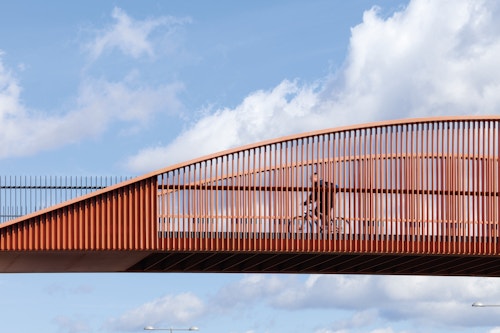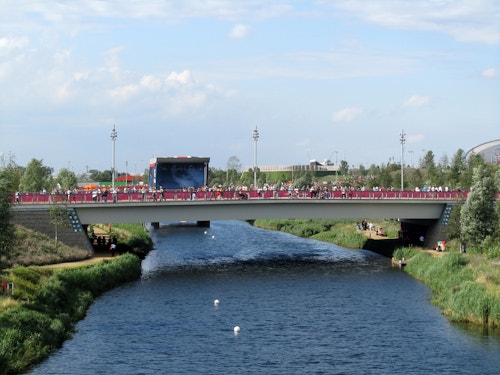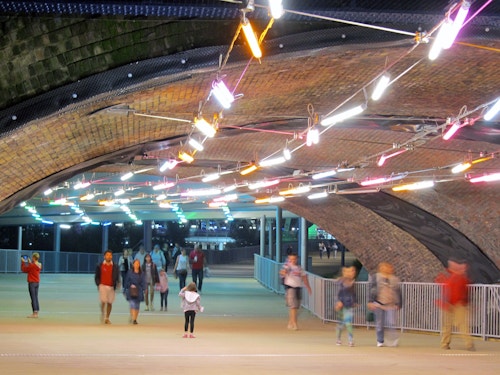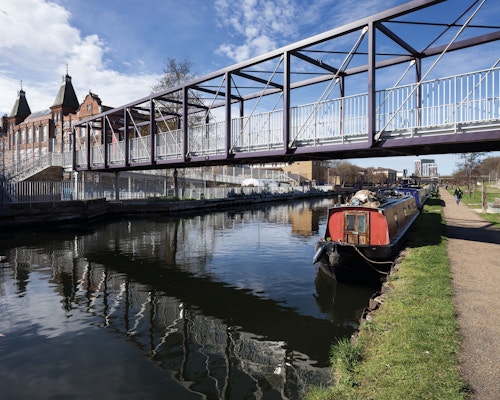Queen Elizabeth Olympic Park Infrastructure
View all projectsStitching it together
The legacy of the 2012 Olympics was designed to be embedded in the city, and the legacy masterplan it has unleashed is still underway. A principle of bringing the Olympics to London was not just to facilitate the event itself but also to ensure that a substantial amount of the huge financial investment in the Games could create enduring benefits for the whole of the area of east London in which it was set. As part of this, a network of infrastructure was built into a new landscape, integrating a new parkland into the fabric of the city. Much of it in use today, it is contributing to the post-Games legacy.

Challenge
For a London development site, the Olympic Park is large. With water routes traversing it north-to-south, it was also hard to cross. The park required an enabling infrastructure of connection that would allow the anticipated millions of visitors during the 2012 Games to easily cross the park and access the park during the four weeks of the Olympic and Paralympic Games. As the park would have a use after the games, some of those connections needed to work for generations to come. The crux of the challenge was how to deliver a single suite of infrastructure components that would satisfy both the temporary needs of the Games and a permanent need. A large number of pedestrian and cycle crossings over water, existing roads and railways were required within the park to connect venues and, in the 2012 Games, route widths of up to forty metres were required to accommodate large crowds.

Northern access bridge, connecting the North Park to Eton Manor

Concept
Thirteen permanent bridges form a family, with common geometries, details and components. Fifteen temporary bridges were designed as overlay elements and where removed after the Games to reveal a pre-formed river valley of landscaped terraces. Maximum investment was made in the permanent structures while temporary installations were designed in an economic and sustainable way that would allow ease of removal and re-use wherever possible.
The permanent bridges are embedded within the landscape, and designed simply to extend the concourse across the water. This strategy allowed other bridges, particularly those at the park's perimeter, to adopt bespoke forms responding to their contexts, and thus constitute an essential component of the public realm.
Among the most significant is the northern access bridge, connecting the North Park over the Eastway to Eton Manor, its bold red-orange colour highlights the sculptural quality of its elements and allows it to stand out as a marker of the northern entrance to the park. Bridges crossing the Lea Navigation connect the park to neighbouring areas such as Hackney Wick. Conceived initially as an identical steel box structure, their outward expression responds to the unique conditions of its setting. Some of the key bridges over the River Lea were designed to be reduced to a more appropriate permanent width after the Games. Parapets are designed to run off the bridges, blending into the landscape, blurring the definition between structure and context.

Information table
- City
- London E20
- Use
- Infrastructure
- Client
- Olympic Delivery Authority
- Status
- Completed
- Collaborators
BRIDGES
Structure: AtkinsServices: Atkins
Quantity surveyor: RLB
Planning consultant: Savills
OLYMPIC CAR PARK
Engineers: Buro HappoldSustainability: BioRegional
Photography: Stale Eriksen




